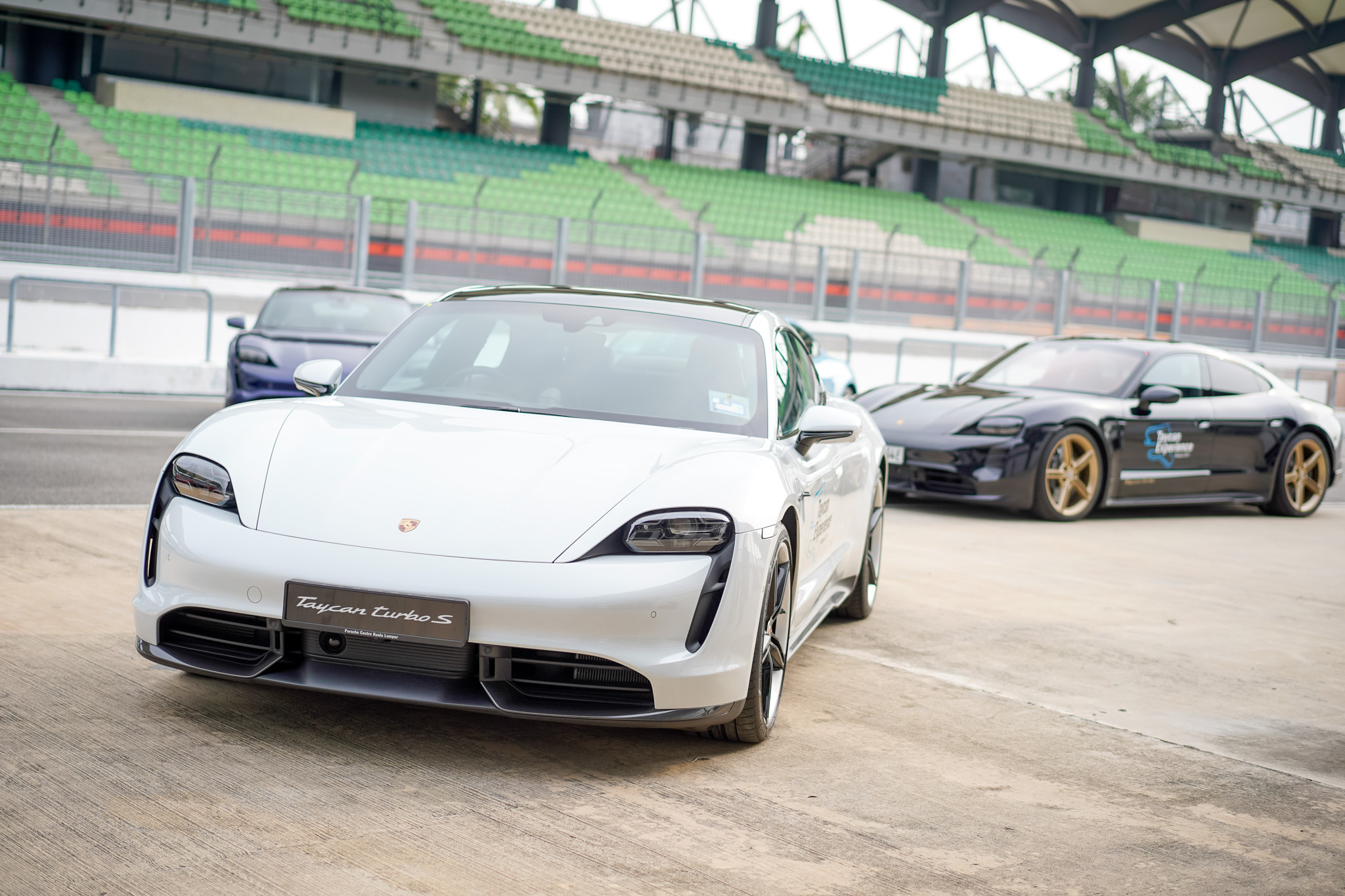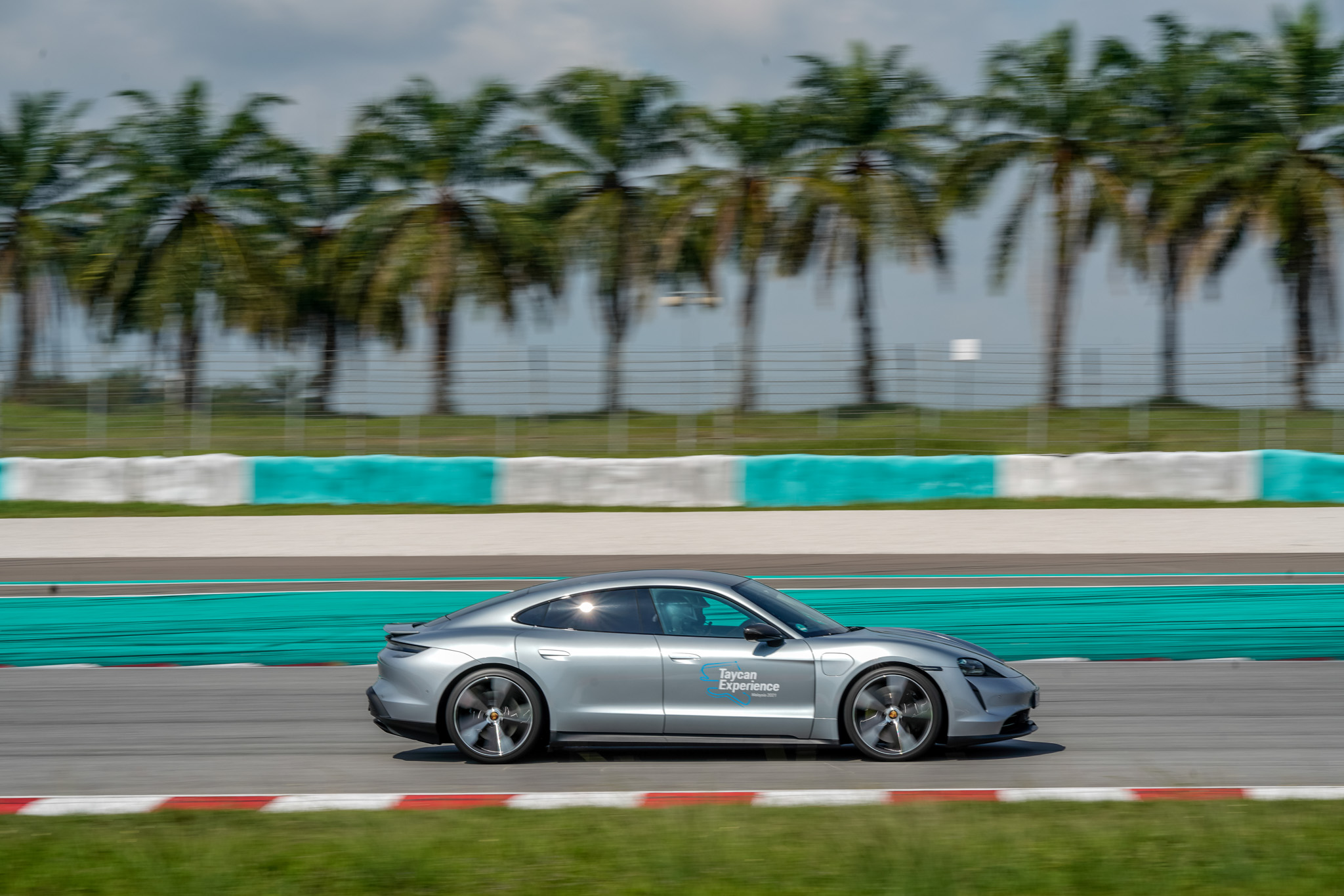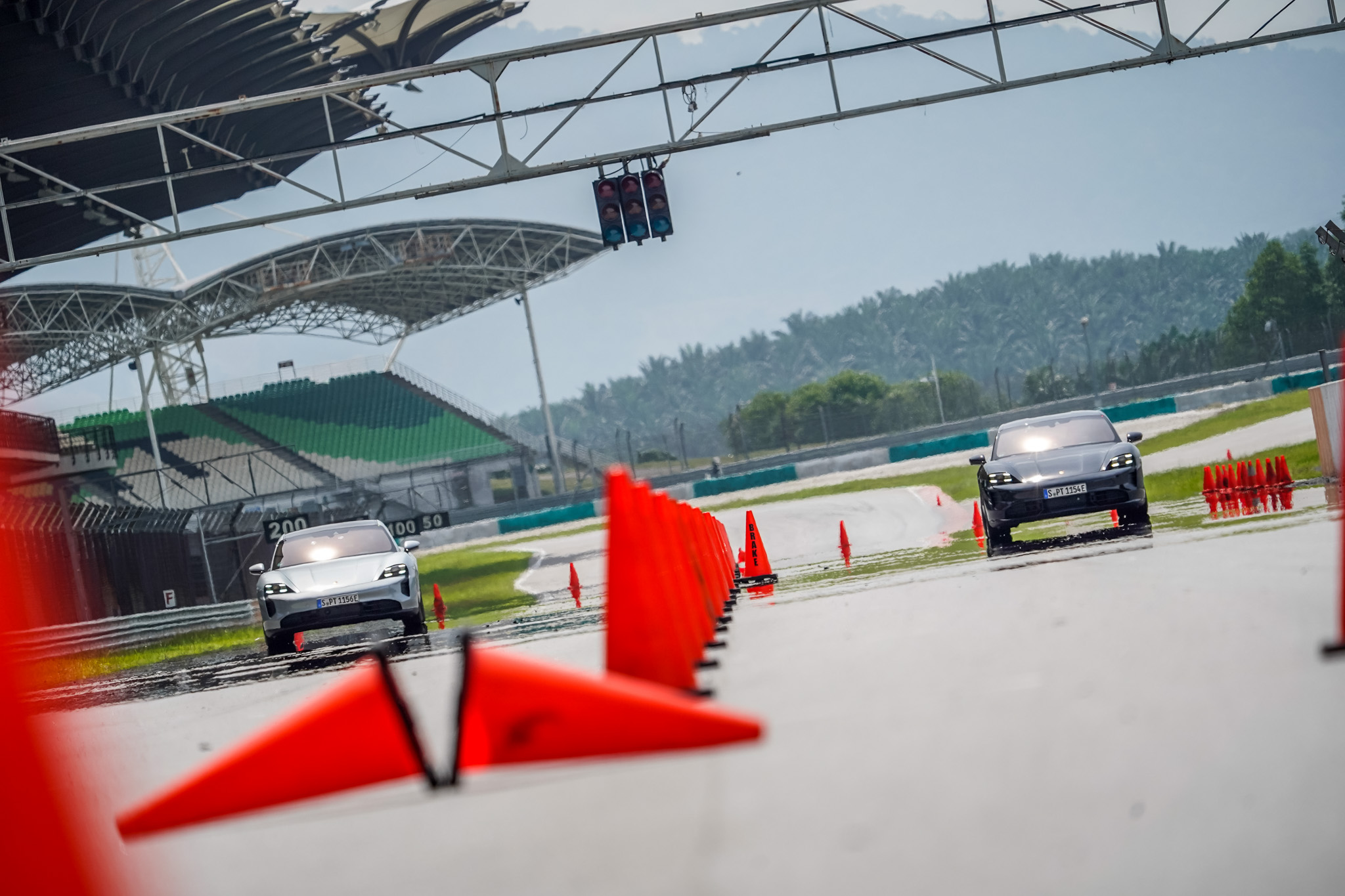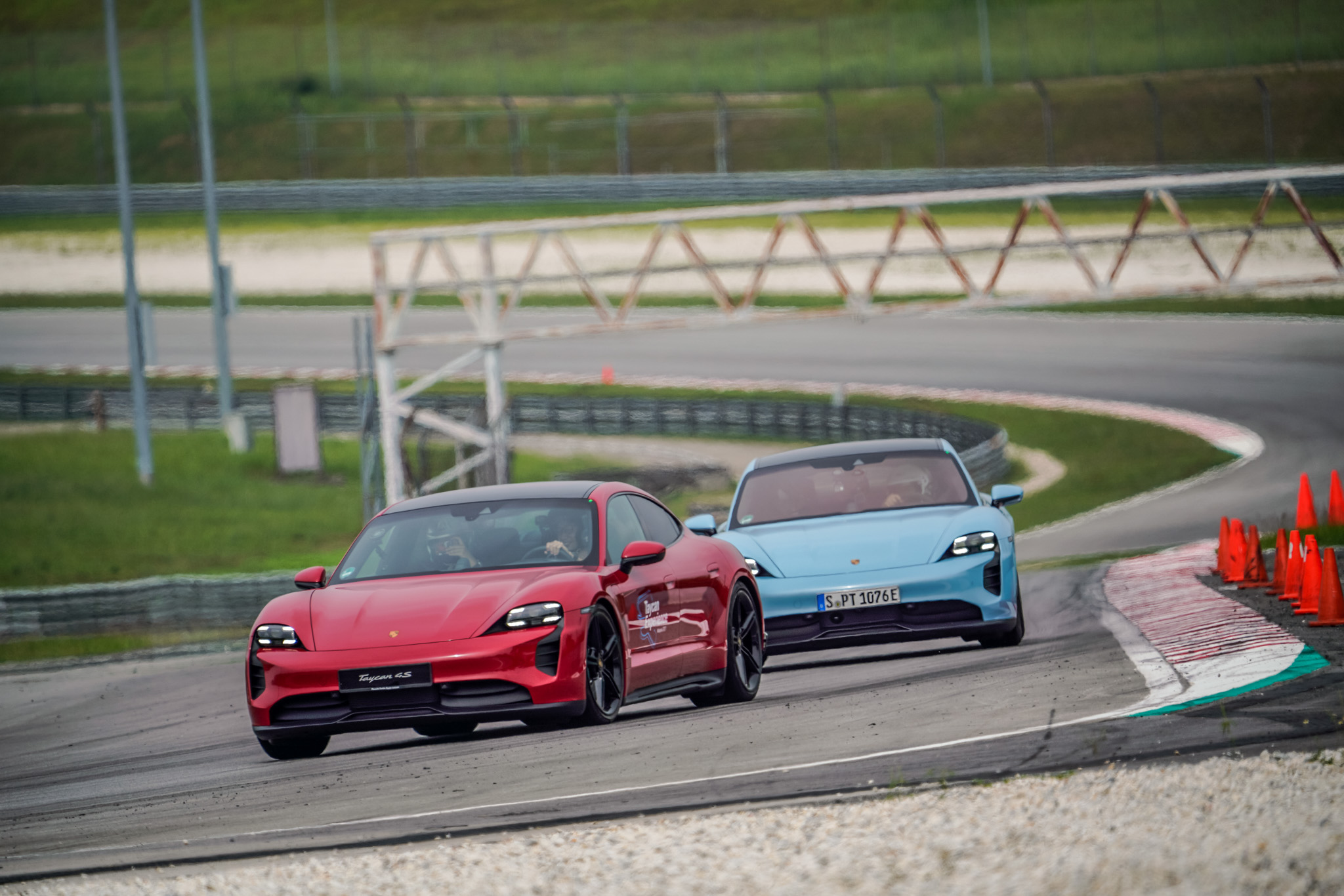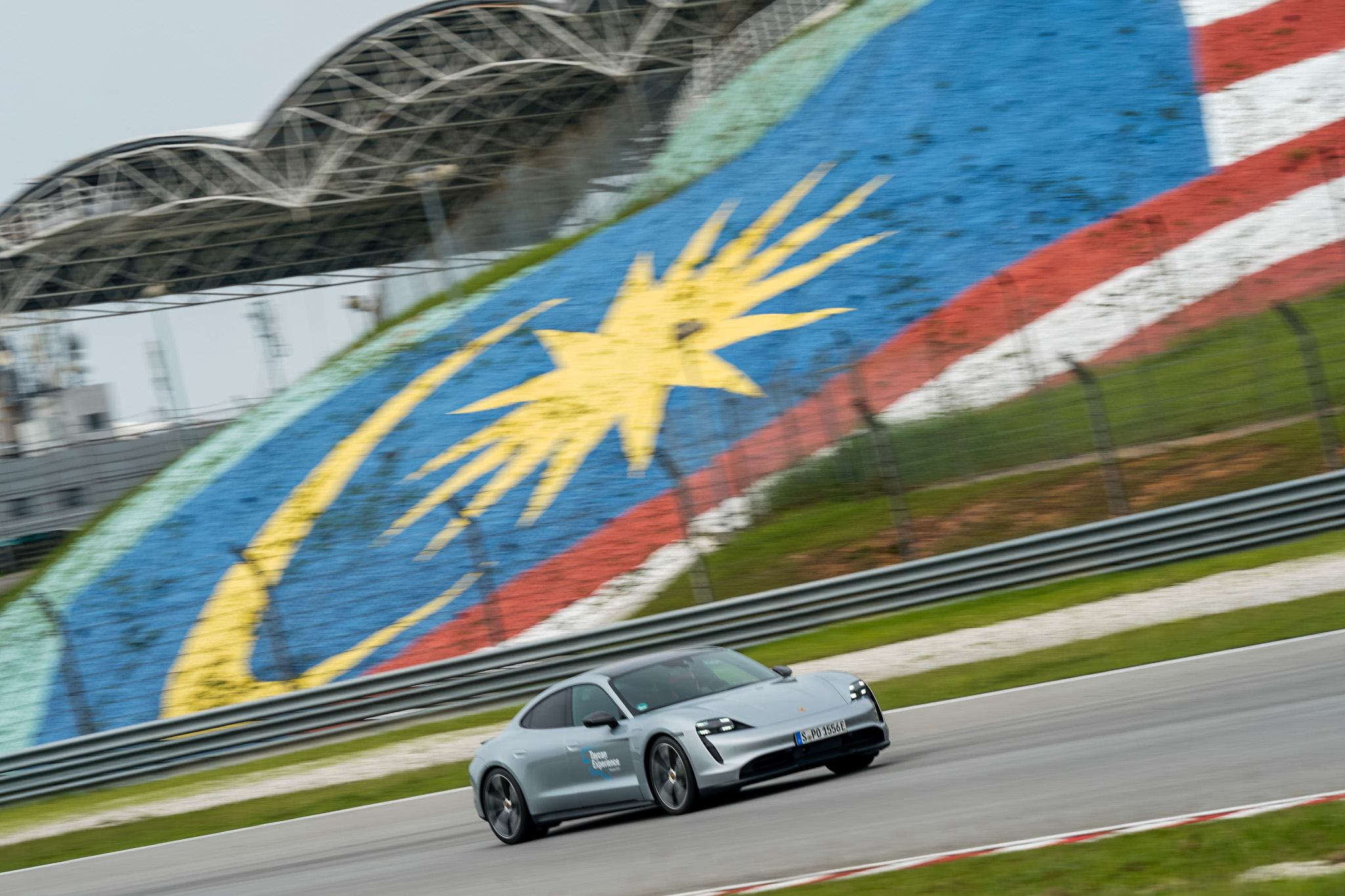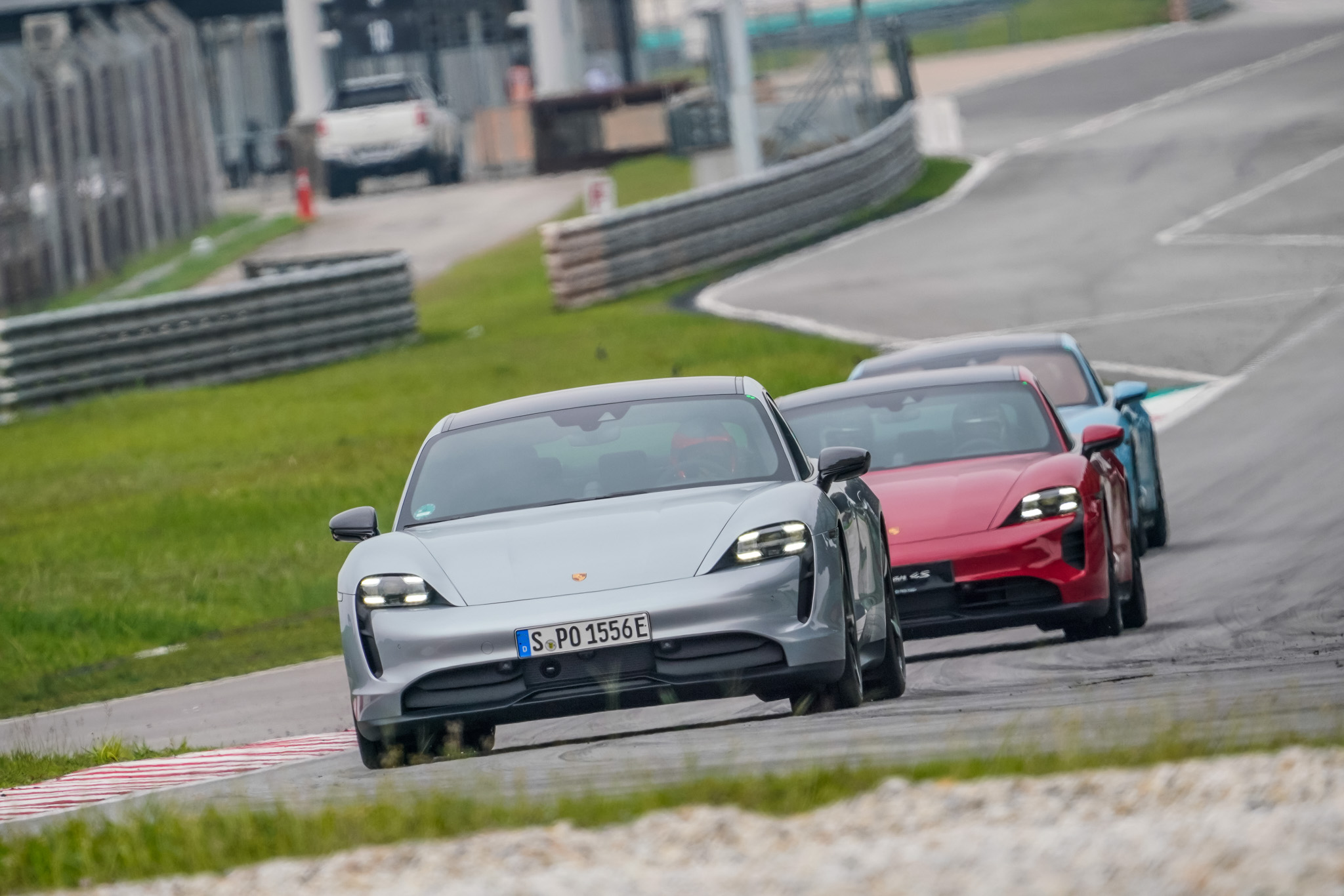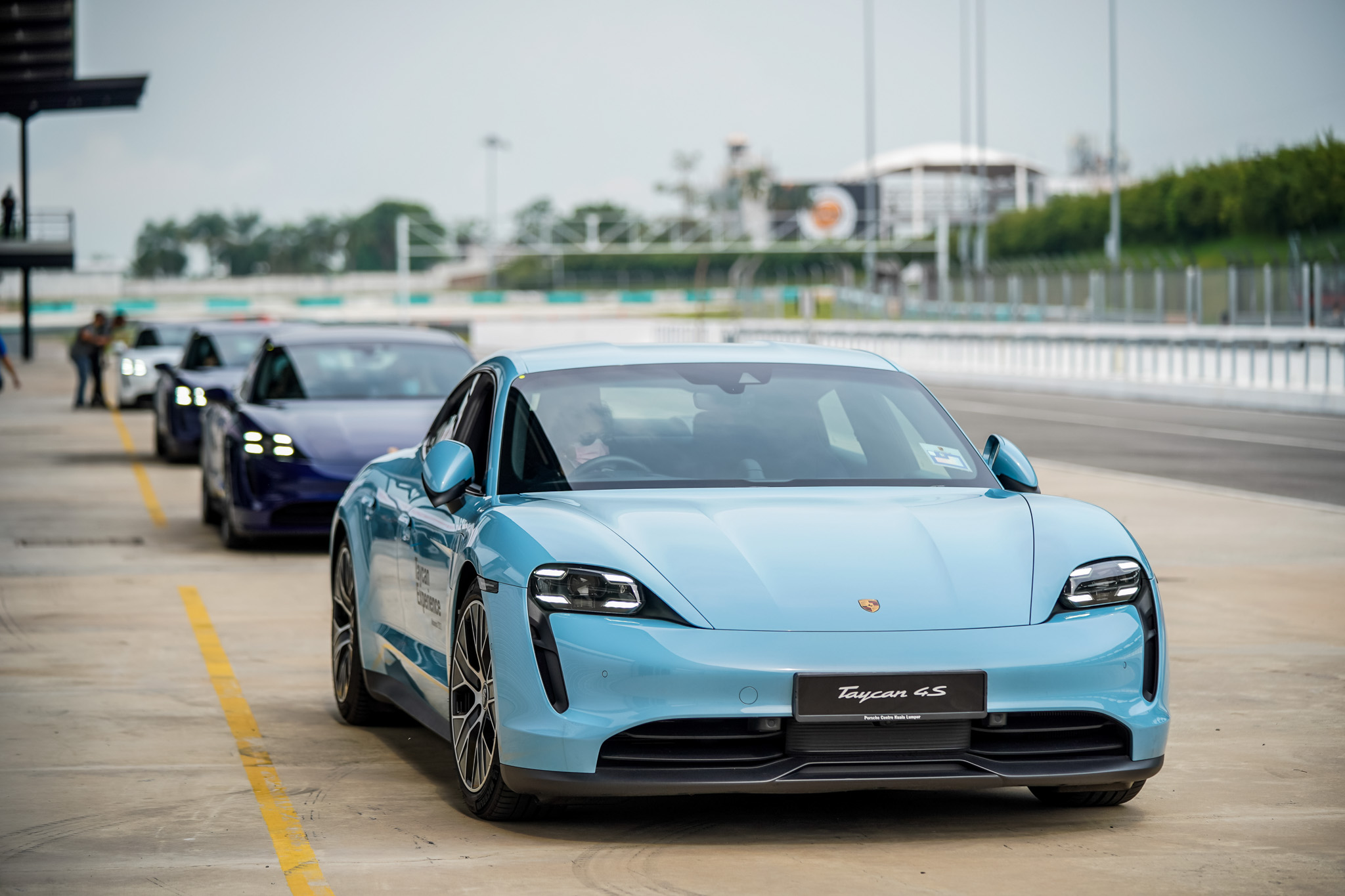Porsche Taycan track test: Sepang’s silent slayer
EV Track Day: How does a Porsche Taycan drive on an F1 circuit?

Three, four, six, eight, 10 and 12; that’s all the cylinder counts I’ve ever sampled in the Sepang International Circuit. But zero is a whole new ball game.
Zero is the number of pistons – or engine for that matter – in the all-electric Porsche Taycan. It’s the amount of noise it makes in the pits and the amount of carbon spat out of its non-existent tailpipes. The upright oval also denotes how much I knew about driving an electric car around a race track going into my first experience behind the wheel of Porsche’s first EV.
My emission-free track day of sorts began in the Taycan 4S, which initially served as the nameplate’s entry variant before a more affordable RWD model was announced. A packed agenda left me with little time to soak up the cockpit. But aside from being momentarily stumped by the peculiar shape and location of the gear knob – yes, we can call it this – everything is where you’d expect it to be in typical Porsche fashion.
That last sentence may not be of much service to Asia Pacific’s latest Taycan owners, 60 percent of which are completely new to the brand, such is the model’s magnetism in a region where Tesla is still largely anonymous. To put things simply, driver ergonomics are a Porsche specialty and there’s no reason for the Taycan to break the mould. It’s the reason why I found myself tackling corners as I would in a 911 just half a lap in. And therein lies our first revelation: the Taycan does NOT feel like an electric Panamera at all.
FUN FACT #1: FIRST-TIME PORSCHE OWNERS ACCOUNTED FOR MORE THAN 60 PERCENT OF NEW TAYCANS SOLD IN THE FIRST QUARTER OF 2021
It wasn’t very long ago when four-door Porsches weren’t even a thing yet. Some purists still liken them to a deal with the devil; a sacrifice of performance for practicality and the profits that come with it, so to speak. But the Taycan is easily Stuttgart’s sleekest and sportiest creation with two rows of useable seats to date. The first-generation Panamera might not have been so polarising if it had the Taycan’s fluid lines.
It’s not just about aesthetics either; the Taycan’s drag coefficient (0.22 cW) is the best score you’ll find in a Porsche showroom today. Factor in things like active aero components, four-wheel steer, adaptive damping and active roll stabilisation into a cauldron that’s already buzzing with 390kW (530PS) and you have a car that’s capable of pivoting around the apexes of Turns 1 and 2 while hugging the tarmac with the level-headed agility of a Carrera 4/4S despite charging into them carrying well over two tonnes of mass. That’s roughly the kerb weight of a Cayenne – batteries and motors aren’t lighter than internal combustion bits after all.
Then again, the Taycan’s electric bones are a touch more complex than the standard EV. And it would have been heavier if not for Porsche’s 800-volt architecture, which packs twice as much voltage as the industry standard for more consistent, sustained performance and faster charging. Its rear-mounted transmission also has double the typical EV gear count, and that’s without taking into account the planetary gear that drives the front wheels. First gear is optimised for acceleration from a standing start and second is for high-speed efficiency. And the former makes all the difference on straights as vast as Sepang’s.

FUN FACT #2: AT 2,140KG (UNLADEN), THE TAYCAN 4S IS 155KG HEAVIER THAN A BASE CAYENNE
This point was amplified as I hopped into the cockpit of a Taycan Turbo for a supervised sprint. With 500kW (680PS) – 150PS more than the 4S – at its disposal, the so-called Turbo is capable of 3.2 seconds on paper. I did not think much of this having experienced sub-3.0-second century sprints before, even among Porsche’s very own (911 Turbo S). If anything, I was slightly disappointed the organisers didn’t let the Turbo S out for this exercise. But no amount of time behind the wheel of supercars I doubt I’ll afford in this lifetime could prepare me for the near-instantaneous way in which the electric Porsche goes from a static hunk of metal to a distant blur.
Some reviewers have described the sensation as being sucked violently into a vacuum, and it’s hard to disagree. The longitudinal G force in the Taycan Turbo is so intense off the line that I had to lift off halfway through my first run, foot on the brakes way before cue. The poor instructor by my side, who had to sit through countless of these nauseating sessions, likened the car’s take-off to that of Tron’s light cycles, though it felt a lot more like the Millenium Falcon in my spinning head.
So, the Taycan takes to the track like a proper driver’s sports car – it won’t feel out of depth in the company of Caymans (or Caymen?) and 911s – and it’s ridiculously fast in a straight line if specced for performance. But my biggest takeaway from the track day was how eerily silent the entire affair was despite being in the presence of thousands of horsepower in the pits and on the track. The unmistakeable stink of grilled brakes was also absent, such is the Taycan’s preference to stop with regenerative braking where feasible.

You don’t usually expect to return to a paddock and enjoy regular-volume conversations on days when you’re allowed to fiddle with launch control and do 190kph on the main straight – the Taycan could have easily done more were we not restricted to the north half of the track. To experience such a rush without stepping out of the car to an environment aurally burdened by the grumbles of shackled V8s and V12s with half their banks shut off is truly bizarre.
There’s just something to that peace and serenity. It’s like discovering a space-age kitchen appliance that can make your favourite comfort food minus the oily chaos that typically ensues. Sure, there are analogue qualities of things past that can’t be replicated and will be missed. But if this is how track days will look (or sound) like in the future, count me in.
As long as there's somewhere for me to juice up for the drive home, of course.
